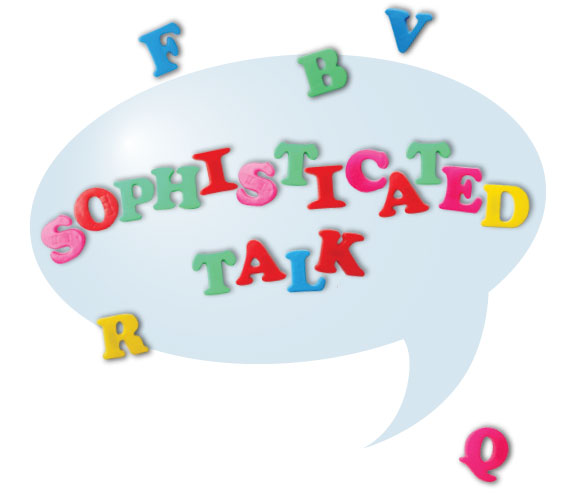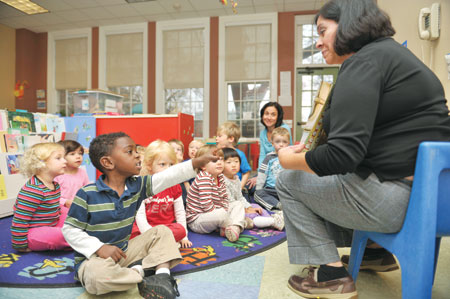 Worried that using that longer word might stump your 3-year old? Worry no more.
Worried that using that longer word might stump your 3-year old? Worry no more.
New research from Peabody finds that preschool teachers’ use of sophisticated vocabulary and analytic talk about books, combined with early support for literacy in the home, can predict fourth-grade reading comprehension and word recognition.
The findings, published in Child Development and included in a review article in the August 19, 2011, edition of Science, present evidence that there are lasting, complex and mutually reinforcing effects that flow from strong early childhood classrooms.
“We need to take very seriously the importance of teaching language in the preschool years,” says David Dickinson, author of the study and professor of education.
“It’s easy to look at tangible accomplishments such as counting or letter recognition but much harder to measure richness of vocabulary and language ability. Parents should take a careful look at what is happening in their kids’ preschool classrooms and see if the teacher is engaging the child in conversations that are rich in language.”
This latest research, co-authored by Michelle Porche of Wellesley College, reports results of a longitudinal study that examined in detail language experiences of children from low-income homes when they were in preschool. The authors sought to identify influences of these early experiences on children’s language and literacy at the end of kindergarten and again in fourth grade.
Preschool teachers were audio- and videotaped, teachers were interviewed and classrooms were observed for their support of language and literacy. Children were individually assessed, and parents were interviewed to learn about their education level and income and any family practices that foster language and literacy.
Although the sample was small, the researchers found robust relations between early classroom support for language and later language and reading ability. The authors also found long-term effects of the home, as children whose parents reported providing more support for early literacy had stronger vocabulary scores in fourth grade. Finally, the structural complexity of children’s language at age 3 was associated with fourth-grade vocabulary.

One preschool teacher behavior which predicted children’s growth was the frequency of sophisticated vocabulary use during informal conversations. Such exposure predicted children’s kindergarten vocabulary, which correlated with fourth grade word reading. Teachers’ use of sophisticated vocabulary correlated with children’s kindergarten print ability, and it is through that skill that the early vocabulary exposure indirectly affected grade-four reading comprehension.
Group book reading in preschool also had long-term associations with later reading. Conversations which included analysis of stories and discussion of words and teacher corrections of incorrect responses predicted receptive vocabulary at the end of kindergarten. This enhanced vocabulary ability was associated with better vocabulary in fourth grade. Also, preschool teachers’ efforts to hold a child’s attention was related to fourth-grade comprehension skills.
“While raising the level of interaction in group activities is important, some of my stronger results in this study are seen from informal interactions between teacher and child, showing the importance of elevated language during times such as play and lunch,” Dickinson says.
Dickinson notes that in recent years preschool has become more of an academic setting, where previously the focus was primarily on socialization and kids’ adjustment to groups. He will begin working with Nashville preschool programs to develop an approach that can help provide teachers with skills to effectively build language among their students. Specifically, he will examine how teachers can use discussions surrounding book reading in combination with teacher support for dramatic play to build language abilities.
He suggests that parents carefully examine the nature of interactions happening at their child’s preschool to see if teachers are engaged in conversations that will stretch language and knowledge.
“I would want to know how often the children are read to,” Dickinson says. “What are some of the books read to the children? Are they books that have three words to a page, or are they books that are similar to what you know you can read to them at home?
“And I would want to know what opportunities the children have for play, and what does the teacher do during that time? Does the teacher actively engage small groups in conversation? You want teachers who are actively engaged without taking over the play. Look to see if the teachers engage children in conversations that take on and build their interests.”